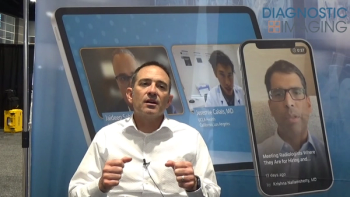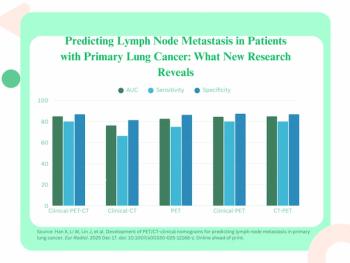
Siemens seeks increased productivity with new universal digital XR system
Showmanship meets technology at ECR launchThree actor/gymnasts, clad in white spandex, turned, twisted, rose in the air, flipped, and rolled over each other's backs in front of the Siemens booth at the European Congress of
Showmanship meets technology at ECR launch
Three actor/gymnasts, clad in white spandex, turned, twisted, rose in the air, flipped, and rolled over each other's backs in front of the Siemens booth at the European Congress of Radiology in Vienna. Their purpose was to demonstrate the flexibility of a digital x-ray system introduced by Siemens Medical Solutions at the ECR.
The ceiling-mounted, all-digital Axiom Aristos FX can duplicate many, if not all, of the motions performed by Siemens' leaping thespians. This flexibility is uncommon for an x-ray suite, according to Claudius Molz, Siemens' product manager for x-ray systems.
Unlike most XR systems, Axiom features two independent ceiling suspensions: one with a flat-panel detector, the other with an x-ray tube. The two are electronically coupled by an autotracking system.
"This gives us a lot of freedom in patient positioning," Molz said. "We can do any application normally done in a conventional bucky room, plus we can do laterals and obliques."
ECR saw the launch of the product, which Siemens is now actively marketing. It will begin shipping in midyear, with most of the sales attention focused on Europe. The system may remain relatively unknown to customers in the U.S. until later this year, possibly until the RSNA meeting, according to Molz. When and how it will be introduced to North American customers has yet to be decided. Customers in the U.S. are free to purchase the system, however, as the Aristos FX cleared the FDA Feb. 1.
Siemens' other digital radiography productsthe Vertix FD, Thorax FD upright, and Multix FD tablelack the flexibility built into the Aristos FX, Molz said. The most versatile in the lineup, the Vertix FD, features an overhead tube stand and a wall stand that moves out, enabling both upright chest imaging and tilting bucky work. The overhead x-ray tube can be combined with both a bucky table and a wall-stand detector in a single room.
The Axiom Aristos FX, like these other units, is built around an amorphous silicon detector. The Pixium 4600 is supplied by Trixell, a joint venture owned by Siemens, Philips, and Thales, a French supplier of x-ray components. But products that use fixed standssuch as the Vertix, Thorax and Multixare limited in the types of exposures they can make by positioning constraints, according to Molz. The Aristos FX is free from such limitations.
The ceiling suspensions allow operators to position the Aristos FX flat panel and x-ray tube in any plane and at any point around the patient. Microprocessors guide the detector and tube into preprogrammed positions for cranial, thoracic, abdominal, pelvic, and extremity exams. Technicians have the option of positioning the system from the console or using remote controls. The system can also be positioned manually.
"Our motto has been to develop a system that moves around the patient, so the patient doesn't have to move around the system," Molz said.
Eventually, the Aristos FX will replace the Multix table system, but possibly not for some time. Meanwhile, Siemens will offer the Aristos FX as a separate product.
While mechanical flexibility and positioning ease may be the major advantages of the system, it has more to recommend it to customers, Molz said. The detector, for example, in concert with a software-controlled automatic exposure subsystem, reduces radiation dose up to 50% compared with conventional film-based systems.
By virtue of its flat-panel detector, the Aristos FX promises to increase productivity over conventional film systems by eliminating the need for film development, speeding patient setup, and minimizing retakes. Images featuring a 43 x 43-cm field-of-view and 3K x 3K pixels can be read in soft copy, enhanced electronically, sent over a network, or printed. An information system handles patient data. Productivity and enhanced utility drove development of the new system, acording to Molz.
"We wanted to build much more flexibility into this systemto make it so we can do more examinations than with existing products," he said.
Newsletter
Stay at the forefront of radiology with the Diagnostic Imaging newsletter, delivering the latest news, clinical insights, and imaging advancements for today’s radiologists.




























